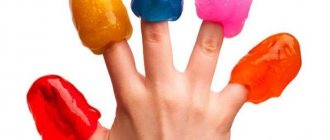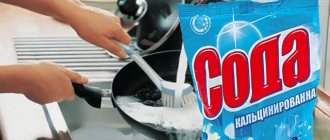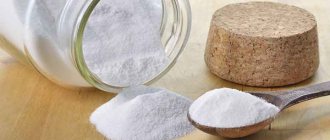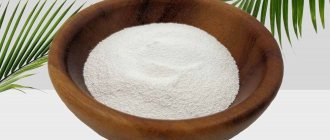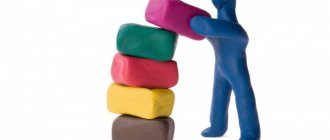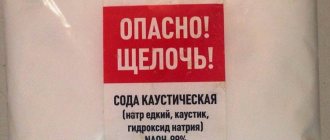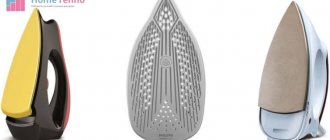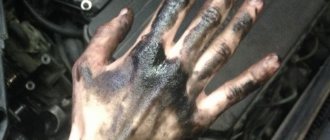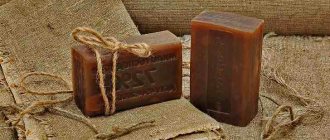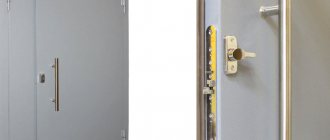Properties of soda ash
Soda ash is a chemical compound of sodium carbonate with the formula Na2CO3. It exists in nature in many algae, as well as in several minerals from which it is obtained. Melts at temperatures above 850 degrees Celsius and is not a fire hazard.
Soda ash is highly soluble in water; it must be stored in dry rooms with air humidity less than 75%. You should not store baking soda in the bathroom.
How to find out the “hardness” of bottled water?
It is best to use “soft” or “moderately hard” water; by the way, this is what is needed for the tea to reveal all its unique taste and aroma. Carefully inspect the bottle, see the label. Use the table to select the appropriate water.
| The softest | up to 1.5 mEq/l |
| Soft | 1.5–3.0 mEq/L |
| Moderately hard | 3.0–6.0 mEq/L |
| Hard | 6.0–9.0 mEq/L |
| The toughest | 9.0 mEq/L and above |
The difference between soda ash and baking soda
Soda ash, unlike baking soda, is a strong alkali, and therefore is used mainly in production and as a replacement for some household chemicals.
Baking soda is used in cooking, as a dental and oral disinfectant, as a remedy for heartburn, and in extinguishing fires. Calcined, as it is more dangerous, is used in production: soap making, glass blowing, as a component of many cleaning products and some enamels, for softening water and degreasing metals.
general information
Soda ash has a crystalline structure and is a strong alkali. When it gets on the mucous membranes, it causes irritation and burns. In industry, GOST 5100 85 has been established for it. There are grades A and B. Their difference is in the mass content of certain chemical elements.
The production of Na2CO3 is a labor-intensive process. The most common method of extracting the substance is ammonia. It is relatively inexpensive, and the output is high quality. They also use a method for extracting soda by splitting nephelines.
The difference between soda ash and baking soda:
- its pH level is 11, while food grade is about 8.
- looser structure;
- the level of danger is higher, it is more aggressive;
- cannot be used in cooking.
Precautionary measures
Soda ash is toxic and causes severe poisoning if it enters the body. When using, you must follow a few simple rules:
- Before use, be sure to wear rubber gloves;
- store in a dry place, separate from food and medicines;
- Keep out of the reach of children;
- in case of contact with eyes or mouth, rinse immediately with plenty of water;
- be sure to comply with the required proportions.
Descaling
If you boil water with a small amount of soda in an enamel kettle, scale can be easily removed from its inner walls.
As you know, limescale deposits form on the parts of a washing machine over time. To clean them, you need to dilute soda with the same amount of water, apply this mixture to the rubber seals and the inner surface of the drum. Wait 30 minutes. After this, remove the product with a sponge, and then rinse the machine again, running a wash cycle without adding laundry.
Using soda ash at home
Sodium carbonate is widely used in everyday life, and is used for:
- removing blockages;
- removing stubborn dirt and grease;
- removing old layers of paint;
- cleaning ceramic, enamel and tile surfaces;
- cleaning porcelain dishes;
- disinfection;
- washing.
Wash
Soda ash is often also called laundry soda, and for good reason, it is great for hand and machine washing, soaking and boiling laundry. It helps in washing things from:
- cotton;
- flax
You cannot use soda to wash items made from:
- wool;
- silks;
- skin;
- suede;
- synthetics;
- lace items;
- things with special coating;
- things with a membrane surface.
Soaking laundry
To soak white items, before washing, you need to put the laundry in a basin with dissolved soda for 8-10 hours in a ratio of 3 tablespoons per 5 liters of water. Before soaking, rub your clothes with laundry soap or add it to the water. After soaking, the laundry will still have a gray tint, however, after washing, the laundry will again become snow-white.
Do not soak laundry again if it is still gray in color after 8-10 hours of soaking, the items will become whiter immediately after washing.
Soda is also used to soak colored items, but its proportions should be different: 3-4 tbsp. l. for 10 liters of warm water. Do not boil colored items with soda ash.
Handwash
When washing by hand, you must follow simple safety rules:
- do not allow the solution to come into contact with the mucous membrane of the eyes and mouth;
- wear rubber gloves before washing;
- keep children away from the soda ash solution;
- After washing, lubricate your hands with cream.
By following these simple rules, you can wash without any problems without using expensive powders or bleaches. Hand washing is carried out in a solution of 3 tablespoons per 5 liters of water.
Machine washable
For machine washing, sodium carbonate is used as a descaling and limescale remover, as a water softener, and as a component of washing gels and powders.
If you are using an inexpensive laundry detergent, add 3 tablespoons of sodium carbonate to it. This will help you wash things better and keep them longer. It is recommended to set the temperature within 50-100 degrees for more active stain removal.
Boiling laundry
When boiling laundry, sodium carbonate is used as a bleaching agent. You need to take an enamel or steel container and pour 10 liters into it. water, add 500 gr. soda and 500 gr. "White" or other chlorine bleach. Boil the laundry for 40-60 minutes in a ventilated area.
Do not use dishes made of copper or aluminum; the laundry may become damaged and stained. Do not use boiling on colored or delicate fabrics. Boiling laundry is best done in a ventilated area.
Washing gel
Sodium carbonate is one of the main ingredients in laundry gel. Its components are inexpensive, and the resulting substance is a strong and mild agent, used even when washing children's clothes.
Manufacturing requires several steps:
- Fill a two-liter saucepan with cold water and bring it to boil. When boiling, you need to add cut or grated laundry soap to the water at the rate of 100 grams. per liter
- After the soap has completely dissolved, add 150 grams of soda, then leave the mixture to boil for 3-4 minutes.
- To protect the skin of your hands, you can also add leafy green tea at the rate of 100 g. per liter
- For aroma, after the gel has cooled, you can add a little flower oil to it.
To combat scale in your washing machine, simply wash things with the addition of soda ash.
Cleaning with soda
Disinfection
Using soda ash, you can disinfect premises; to do this, it is enough to create a solution from a mixture of soap and sodium carbonate in the amount of 10 g. each substance per liter of liquid. This will give you a one percent cleaning solution. This product can be used to disinfect any surface, however, if you want to disinfect tiles, you will need a 2-3 percent solution.
An alternative way is to mix the resulting two percent solution with another one at a ratio of 1 to 1. To prepare the second solution, take 20 grams of soda and 5 grams of cleaning powder per liter of water.
Be sure to wear rubberized gloves and use the mixture immediately after creating. It is recommended to treat surfaces daily, making sure to ventilate the room being disinfected.
Features of use
Solutions with soda ash cannot be used for:
- washing items made of silk, wool, leather, leatherette, membrane fabrics: it destroys the fibers of the fabrics and the items will become unusable;
- cleaning aluminum, copper, cast iron cookware: salt corrodes these metals;
- washing suspended ceilings and fiberglass ceiling tiles;
- washing wooden floors, parquet, laminate;
- washing plastic windows, acrylic bathtubs;
- washing enameled and varnished surfaces.
When working with soda ash, follow safety rules: use personal protective equipment: gloves, goggles, respirator (if necessary); contact of the substance with mucous membranes is not permissible; When working, follow the dosage from the recipe.
IMPORTANT : if the substance enters the digestive tract, it causes severe burns and poisoning. Contact your doctor immediately!
Using soda ash in the kitchen
Sodium carbonate is used in the kitchen to clean dirty work surfaces and household appliances.
Cleaning household appliances
Microwaves, toasters, multicookers, juicers, coffee makers and other household appliances can be cleaned with soda ash. To do this, you need to make a solution at the rate of 3 tbsp. spoons per 1 liter of warm water, wash the selected surfaces with the solution, and then rinse all surfaces with water and wipe dry.
Gas and electric stoves, ovens
To clean stoves, stoves and ovens, you need to add a little silicate glue to the solution.
- 1 tbsp should be added to the solution prepared earlier (3 tablespoons of soda per 1 liter of water). l. silicate glue;
- add 1 glass of warm water, in which 1/2 tbsp is dissolved. l. washing powder;
- Rub the resulting solution over all surfaces to be cleaned;
- remove softened dirt with a damp sponge;
- repeat the procedure if necessary.
The solution should be stored in a tightly sealed container. It is recommended to mix it thoroughly before re-use.
Cleaning the kettle from scale
There are two ways to remove scale from a kettle. In the first, the kettle is placed on the stove, with a solution of sodium carbonate in the proportion of 1 tsp. per 1 liter of water and bring to a boil. In the second, scale is manually scrubbed off with soda.
When cleaning the kettle by hand, be sure to use gloves.
Cleaning pots and pans from carbon deposits
Sodium carbonate is good at dissolving stubborn dirt from enamel and ceramic frying pans and pots. To clean the dishes, you need to prepare the following ingredients:
- large steel container;
- 1 pack sodium carbonate;
- 2-3 bottles of silicate glue;
- 200 gr. laundry soap;.
Recipe:
- Place all pots and pans in a large container;
- Fill the dishes completely with water;
- Place the container on the stove and pour 1 pack into it. soda and silicate glue;
- add 200 gr. grated laundry soap;
- boil for 20-180 minutes, depending on the degree of contamination;
- Rinse the dishes thoroughly with a sponge under running water.
It is not recommended to clean aluminum and cast iron cookware in this way, as strong alkali destroys these metals.
Dishes
Soda ash is also used to clean kitchen utensils from dirt and whiten yellowed enamel. Mix soda in boiled water in a ratio of 3 tbsp. spoons per 1 liter of water.
Baking soda can also be used in the dishwasher; for this you need to use 2 tsp per load. borax (sodium borax) and 2 tsp. soda With a half load dishwasher, you can use 1 tsp. each substance.
Read more in the article: Soda ash in the kitchen.
Cleaning tiles and plumbing
We can help you easily clean a bathtub, toilet or sink: soda ash, baking soda, vinegar and bleach. The whole procedure takes half an hour, the work itself takes a few minutes, the rest of the time is needed for the soda to have time to eat away the dirt. This product effectively dissolves soap deposits, sebum, limescale, urinary stone (in the toilet) and removes traces of rust around the drain and taps.
We will need:
- Soda ash and baking soda 3 tbsp. l.
- A third of a glass of liquid bleach and the same amount of table vinegar.
- Sponge and spray bottle.
Mix baking soda and soda ash, rinse the bathtub, toilet or sink with water, dip a damp sponge into the resulting powder and apply to the surface, you can rub it lightly. Leave the product to allow the baking soda to penetrate the dirt and begin to break it down.
After half an hour, apply a mixture of bleach and vinegar on top of the soda; it is convenient to use a spray bottle for this. Don't be alarmed if the product starts to hiss and foam - this is normal, as it should be. When the reaction is complete, rinse the plumbing with water from the shower head; if there are small specks of dirt left, rub them with the hard side of the dish sponge and they will be easily washed off.
To wash the tiles, use a soda solution (2-3 tablespoons per liter of water), and rinse off the remaining product with clean water.
Using soda ash in the garden
Sodium carbonate is used in many places, so it has its uses in the garden as well. It helps protect against powdery mildew and some less common diseases spread by humid climates.
Powdery mildew
To resist powdery mildew, you need to make a solution according to the following recipe:
- Pour 10 liters of water;
- Take 2 tbsp. l. sodium carbonate and 40 grams of grated laundry soap;
- Stir thoroughly until completely dissolved;
Infected plants must be sprayed 1-4 times a week based on the severity of the damage to the plants. It is recommended to use the solution in calm weather, in the absence of precipitation and at low temperatures.
To prevent powdery mildew, it is necessary to treat the plants twice at equal intervals between bud set and flowering of the plant.
Processing perennial flowers
To treat perennial flowers, dissolve four tablespoons of soda in 5 liters of water. Flowers are treated once or twice a week during the growing season - the moment from the beginning of plant growth until the end of the reproduction process.
You can try to save rotting plants using sodium carbonate. You need to stir 1 tbsp. l. soda in 10 liters of water. The mixture is poured into a watering can, after which the plants are watered. It is recommended to water no more than twice a month.
Viburnum leaf beetle
To protect against the viburnum leaf beetle it is necessary
- take 200 grams of potassium soap;
- mix with 1 tbsp. l. soda ash;
- dissolve the mixture in a bucket of water;
The resulting solution must be sprayed on the inside of the leaves no more than once every 7 days until the insects disappear.
Rose processing
For preventive treatment of roses you need:
- 5 liters of water;
- 1 tsp. sodium carbonate;
- 1 tsp. Epsom salts;
- ½ tsp. ammonia;
This mixture must be watered and sprayed on the outside of the flowers no more than three times a month at regular intervals. It is better to spray young roses without ammonia, since it has a bad effect on the development of plants at an early stage.
In landscape design
When creating landscape design, sodium carbonate is used as a weed control agent. When laying tiles, it is enough to pour soda into the seams between the tiles or treat the seams with a one percent solution. After the procedure, you should cover the tiles to protect them from precipitation for two weeks, then wash them by hand or wait until it rains.
In this video, the author talks about the use of soda ash in the garden as a means of protecting shrubs from aphids and several diseases, including gray rot and powdery mildew.
Read more: Soda ash in the garden.
Reviews
You can leave your reviews about soda ash, they will be useful to other users of the site!
Ekaterina, 42 years old
I have been using soda ash for many years. I use it for laundry, and I find it indispensable for cleaning the sink and bathtub. I especially like that it does not cause allergies, and I am an experienced allergy sufferer. In general, this is an excellent and well-known product that should certainly be in the arsenal of any housewife.
Marina, 23 years old
I don't understand why this soda ash hasn't been discontinued yet. Nowadays, many detergents are produced, as well as powders that are many times more effective than soda. I once tried to use it to wash a white shirt from stains after a feast, but I just wasted my time and energy.
Soda ash has found its use not only in industrial production, but also in everyday life. This white powder cleans and disinfects well, making it an indispensable and inexpensive home helper.
Why office glue and soda clean utensils well
Not everyone knows that many substances can be used for other purposes than their intended purpose. Stationery glue is used to connect fabric, paper and other surfaces, and it is also used to clean kitchen utensils. It contains synthetic and natural polymers that soften existing plaque, break up soot and dissolve fats, and remove calcium deposits.
Dirt can be easily removed with a spatula or washed off with hot water. Cleaning dishes in this way at home does not take much time, the main thing is to choose the appropriate type of stationery glue:
- Silicate glue contains trace elements (sodium, potassium), soda, and quartz sand. This composition copes well with a dense layer of carbon deposits on frying pans and pots.
- PVA contains acetone and polyvinyl acetate. The first component actively fights all kinds of contaminants and dissolves old fat. Helps wash dishes after large feasts, skewers and grill grates after kebabs and barbecues.
In its pure form, liquid glue is not suitable for cleaning dishes. It is supplemented with other components, such as laundry soap, soda, and hydrogen peroxide. Such mixtures are more effective. One ingredient enhances the effect of another. The end result is a perfect result.

